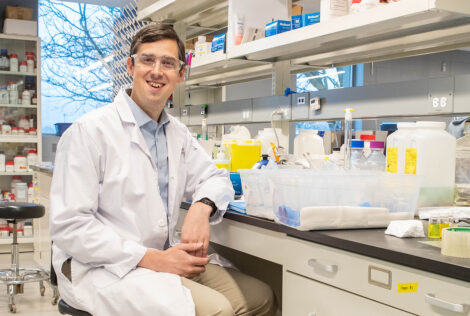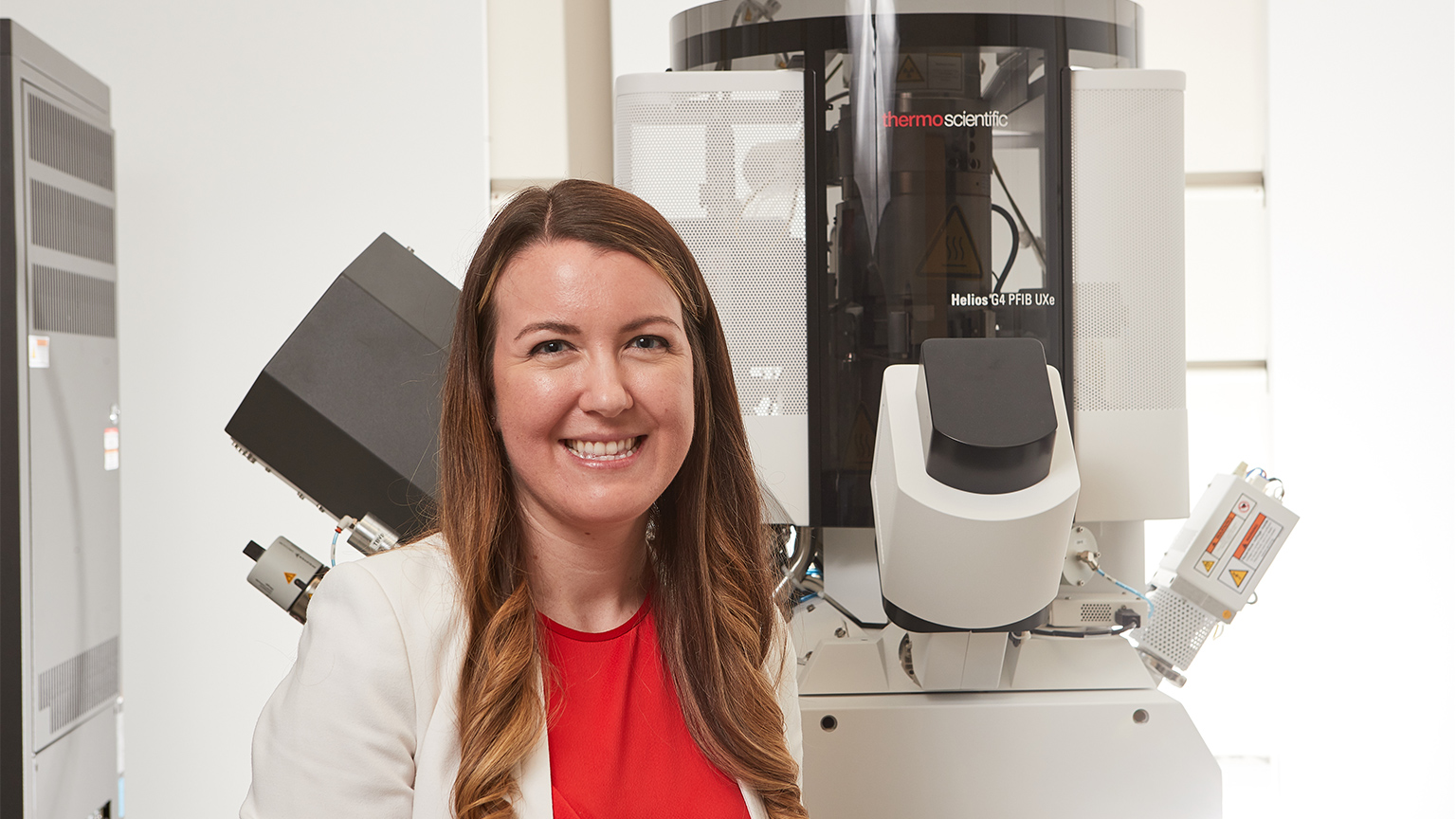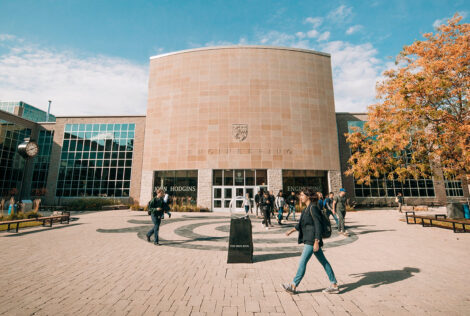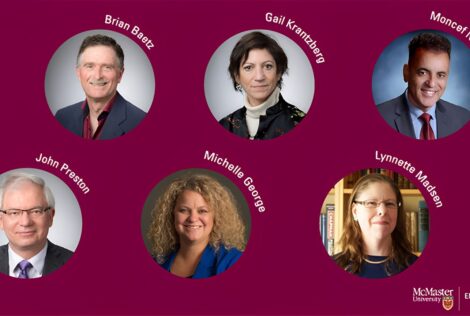

Kathryn Grandfield, associate professor of biomedical engineering and materials science and engineering, has received a prestigious grant worth more than $1.3 million for research that could lead to better understanding of — and treatments for — illnesses related to bone density.
Grandfield heads the McMaster arm of a three-year international pilot awarded a grant from the Human Frontier Science Program (HFSP), which supports ambitious international research projects that span multiple disciplines. She is the first researcher at McMaster to receive an HFSP award.
Grandfield and her colleagues in France and U.S. will explore whether subcellular networks play a role in bone mineral depletion and restoration — that is, how minerals move through bones and how bone structure changes.
The mechanics of bone mineral
The conventional theory is that minerals like calcium move through a cell network in the bones, — the osteocyte network x— which connects and transmits information through bones.
“We think that’s not the only mechanism,” Grandfield says.
Our grant is to study whether it’s just these cells that tell bones when to deplete minerals for lactation and send minerals back later, or if there’s another, even smaller porosity network responsible as well.
Grandfield’s team will use a plasma focused-ion beam microscope, which allows researchers to study a large volume of tissue at high resolution, rather than just a tiny fragment.
Grandfield and Nabil Bassim, scientific director at the Canadian Centre for Electron Microscopy, were awarded the microscope at McMaster in 2017 — the first of its kind in Canada — and Grandfield was the first to use it to study bone tissue.
“You can see cell networks in bone, and the different organization of mineral structure,” Grandfield says. “We saw a pore network which we hadn’t seen before, and identified it as worth investigating.”
The researchers are focusing on lactating mice because massive changes in bone mineral content happen rapidly. Human bones change quite dramatically as well, constantly evolving over one’s life or losing mineral density more quickly in the case of disease, Grandfield explains. Mice lose up to 30 per cent of bone mineral density while lactating, then regain most of it, while humans may lose up to 7 per cent.
Every lab has a role to play
The researchers are taking a multimodal approach to look at this, Grandfield says, and each lab plays a different role. “It really calls for full integration between our labs,” she notes.
“I’ll use our plasma focused-ion beam microscope to identify first the cell network, then a smaller pore network.”
With the information and images from Grandfield’s lab, assistant professor Alessandra Carriero at the City College of New York will use computational fluid flow models to determine whether the osteocyte porosity network alone can account for the massive change in bone minerals, or whether a subcellular porosity network plays a role in it.
Then, researcher Aurélien Gourrier at CNRS, Université Grenoble Alpes in France, will apply artificial intelligence and machine learning to compare Grandfield’s images — “which are challenging and expensive to perform” — to correlate them to a simpler type of microscope, allowing them to look at more samples.
Why it matters
This grant represents new research for the team of three. “We have never looked at mineral flow inside bone — most of our work has focused on bone implants and disease,” Grandfield says.
“Studying mineral transport and fluid flow will increase our understanding of bone biology and help decipher other bone diseases that involve mineral exchange, like osteoporosis.”
Current treatments target osteocyte networks, but if a subcellular network also plays a role, researchers can develop more effective, targeted treatments.
“There’s a lot of potential with this project that invests in basic science research,” Grandfield says.
If we can understand this fundamental biological mechanism, we can apply it to many other situations. If we know how bones communicate and grow, we have a far greater ability for designing more suitable interventions.
A first for McMaster
HFSP grants support innovative and interdisciplinary basic research by teams from multiple countries who combine their expertise to find answers that would elude individual researchers or laboratories working alone.
Grandfield is the first researcher at McMaster to receive an HFSP grant. Twenty-eight grant recipients have gone on to receive Nobel Prizes.
HFSP grants are challenging to receive, and highly sought after — this year there was only a 3.8 percent success rate.
“I’m really honoured that we were selected,” Grandfield says. “Leading the first team at McMaster to win this award means a lot me and provides us with opportunities for major impact on understanding bone biology, and eventually promoting bone health.”


